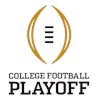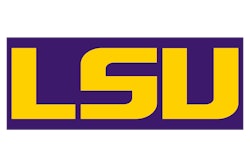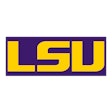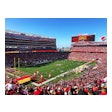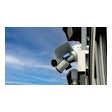Copyright 2018 Woodward Communications, Inc.
All Rights Reserved
Telegraph Herald (Dubuque, IA)
It probably felt like a cutting-edge caper at the time: The New York Giants, using an elaborate spyglass-and-buzzer system, would have the opposing team's signs relayed from their center-field clubhouse at the Polo Grounds to the bullpen and then to the batter, passing along valuable information during the team's pursuit of the 1951 pennant.
The question nowadays is whether there's an app for that.
Stealing signs is as much a part of baseball tradition as stealing bases, but the technology available now could open a whole new frontier of competitive sleuthing. The latest flare-up came when a man associated with the Houston Astros was pointing his cellphone into opposing dugouts during playoff games against Cleveland and Boston. The Astros said they were just trying to defend themselves against any suspicious activity from opponents.
There's clearly plenty of paranoia to go around.
"The game is so ultra-competitive and there's so small margins between really good teams and really good players and there's a lot at stake," Houston manager AJ Hinch said before losing to the Red Sox in the AL Championship Series. "So we do have to find a healthy place for everyone to be comfortable moving forward competitively because it's a bigger topic than even one instance."
The art of sign stealing ranges from the mundane — a baserunner trying to decode the catcher's signals and let the batter know what's coming — to more complex spying schemes. Even 19th century technology could apparently be useful.
In his 2007 book "The Cheater's Guide to Baseball," Derek Zumsteg mentions an 1898 incident in Philadelphia when a visiting player found a buried wire in the area around third base.
"The wire ran all the way to the home team's clubhouse in the outfield," Zumsteg wrote, "where a player would sit with binoculars and signal the pitch by setting the ground under the third base coach shaking, and the coach would in turn alert the batter."
The 1951 Giants famously beat out the Dodgers for the National League pennant on Bobby Thomson's playoff-winning homer . A half-century later, New York's sign-stealing system was laid bare in a Wall Street Journal story that quoted members of that team. The bullpen would receive the signs from the clubhouse via a buzzer system. Catcher Sal Yvars said he relayed them to hitters.
Fast forward to the present era, and the possibilities for surreptitious surveillance seem endless.
"If they're in the dugout, and they're in there trying to steal our signs, I think that's part of the game," said Dave Dombrowski, president of baseball operations for the Red Sox. "If you're doing electronic devices, that's against the rules. We were penalized last year."
The Red Sox were indeed fined last year for using an Apple Watch while trying to steal signs from the New York Yankees. Major League Baseball says before this postseason, teams contacted the commissioner's office about sign stealing and "the inappropriate use of video equipment" — and it wasn't just one team that was the target of those concerns.
This week's controversy brought suspicion upon the Astros — and Houston in turn expressed its own suspicions of other teams. MLB essentially agreed with the Astros' explanation, saying an investigation of recent incidents concluded "that an Astros employee was monitoring the field to ensure that the opposing club was not violating any rules."
Houston general manager Jeff Luhnow said his team always has its guard up.
"There's a lot of technology in ballparks these days, video cameras and high-speed cameras and high-magnification cameras," Luhnow said. "When we go into an opposing ballpark, we tend to look around and make sure that we don't see any suspicious activity. We've been doing that as a matter of course for a while."
Watch any game, and you can find evidence of the lengths teams might go if they're worried about who is watching. It's one thing for a catcher to switch to more complex signs to avoid giving away the next pitch to a runner on second — but now a team might do that even if the bases are empty.
"We utilize multiple signs with nobody on base. Other teams do that as well," Hinch said. "We ask a lot out of our catchers. We have 12, 13, sometimes 14 pitchers on a roster that can all have different signs and different sequences."
One way to avoid having signs stolen is for the catcher and pitcher to have a private meeting — but mound visits were slowing the game so much that baseball put a limit on them. There have already been seven passed balls in the postseason this year — there were six in the whole 2017 postseason — so perhaps pitchers and catchers are getting crossed up more often.
For decades, sign stealing was a mysterious, almost charming addition to baseball's culture, but too much suspicion can certainly hurt the sport.
"I think there is a paranoia about what you're doing competitively to try to be your best," Hinch said. "And when teams are curious about us or we're curious about other teams, it's largely a distraction away from the best part of the game, which is on the field with the players."
Read More of Today's AB Headlines
Subscribe to Our Daily E-Newsletter
Terms and Conditions Privacy Policy












